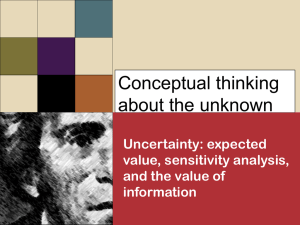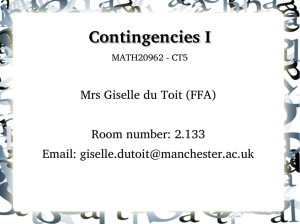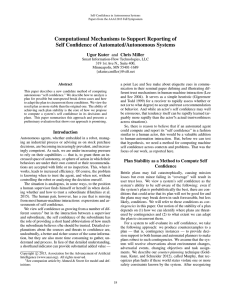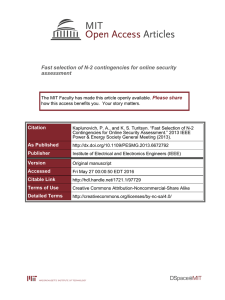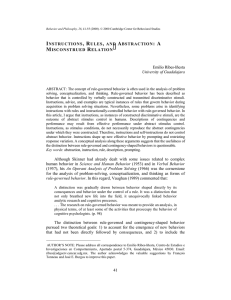Document 12094033
advertisement
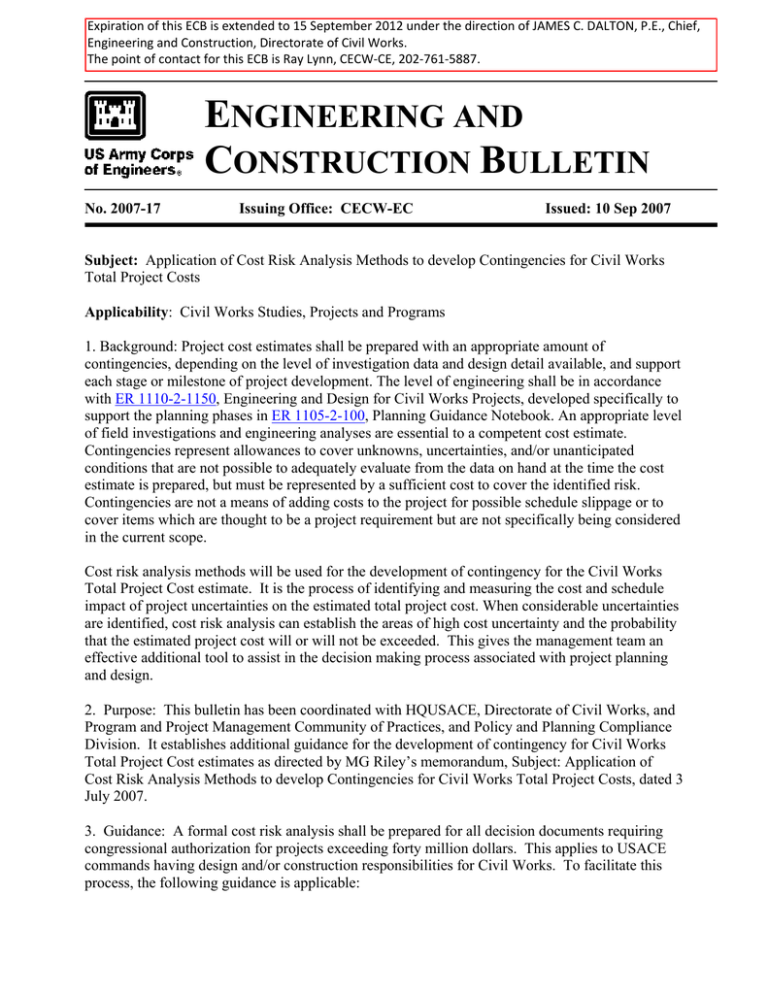
Expiration of this ECB is extended to 15 September 2012 under the direction of JAMES C. DALTON, P.E., Chief, Engineering and Construction, Directorate of Civil Works. The point of contact for this ECB is Ray Lynn, CECW-CE, 202-761-5887. ENGINEERING AND CONSTRUCTION BULLETIN No. 2007-17 Issuing Office: CECW-EC Issued: 10 Sep 2007 Subject: Application of Cost Risk Analysis Methods to develop Contingencies for Civil Works Total Project Costs Applicability: Civil Works Studies, Projects and Programs 1. Background: Project cost estimates shall be prepared with an appropriate amount of contingencies, depending on the level of investigation data and design detail available, and support each stage or milestone of project development. The level of engineering shall be in accordance with ER 1110-2-1150, Engineering and Design for Civil Works Projects, developed specifically to support the planning phases in ER 1105-2-100, Planning Guidance Notebook. An appropriate level of field investigations and engineering analyses are essential to a competent cost estimate. Contingencies represent allowances to cover unknowns, uncertainties, and/or unanticipated conditions that are not possible to adequately evaluate from the data on hand at the time the cost estimate is prepared, but must be represented by a sufficient cost to cover the identified risk. Contingencies are not a means of adding costs to the project for possible schedule slippage or to cover items which are thought to be a project requirement but are not specifically being considered in the current scope. Cost risk analysis methods will be used for the development of contingency for the Civil Works Total Project Cost estimate. It is the process of identifying and measuring the cost and schedule impact of project uncertainties on the estimated total project cost. When considerable uncertainties are identified, cost risk analysis can establish the areas of high cost uncertainty and the probability that the estimated project cost will or will not be exceeded. This gives the management team an effective additional tool to assist in the decision making process associated with project planning and design. 2. Purpose: This bulletin has been coordinated with HQUSACE, Directorate of Civil Works, and Program and Project Management Community of Practices, and Policy and Planning Compliance Division. It establishes additional guidance for the development of contingency for Civil Works Total Project Cost estimates as directed by MG Riley’s memorandum, Subject: Application of Cost Risk Analysis Methods to develop Contingencies for Civil Works Total Project Costs, dated 3 July 2007. 3. Guidance: A formal cost risk analysis shall be prepared for all decision documents requiring congressional authorization for projects exceeding forty million dollars. This applies to USACE commands having design and/or construction responsibilities for Civil Works. To facilitate this process, the following guidance is applicable: ECB 2007-17 Subject: Application of Cost Risk Analysis Methods to develop Contingencies for Civil Works Total Project Costs a. The cost engineer is assigned the responsibility for conducting the cost risk analysis for development of project contingencies presented in the total project cost estimate. b. The Project Delivery Team (PDT) shall assist the cost engineer in establishment of project contingencies by identifying risks and their potential impacts to cost and schedule. c. Crystal Ball software shall be used to conduct Cost Risk Analysis. Until a Corps-wide license agreement is negotiated with Decisioneering, the Crystal Ball software is available for purchase through GSA contract #GS-35F-0544P, effective through 24 May 2009. d. Initial web-based training for cost risk analysis will be provided at no cost and scheduled in Oct 2007. The training is targeted for cost engineers and will be recorded and made available for other PDT members at a later date. e. Application. 1. During the Feasibility phase, a cost risk analysis shall be performed once the recommended plan is identified. The results of the cost risk analysis will be included in the Feasibility Report and discussed at the Alternative Formulation Briefing. 2. During the PED phase, a new cost risk analysis shall be conducted upon major changes in design and for each update in the Total Project Cost Estimate. A cost risk analysis report shall be included as part of any Post Authorization Change Report to support the revised authorized cost. 3. As required by ER 1110-2-1302, the project cost estimate shall be updated every 2 years. A new cost risk analysis shall be conducted at this time. 4. Points of contact for this bulletin is Raymond Lynn, CECW-CE, 202-761-5887 or Mark Fascher, CECW-CE, 202-761-7750. //S// James C. Dalton, P.E. Chief, Engineering and Construction Directorate of Civil Works 2

